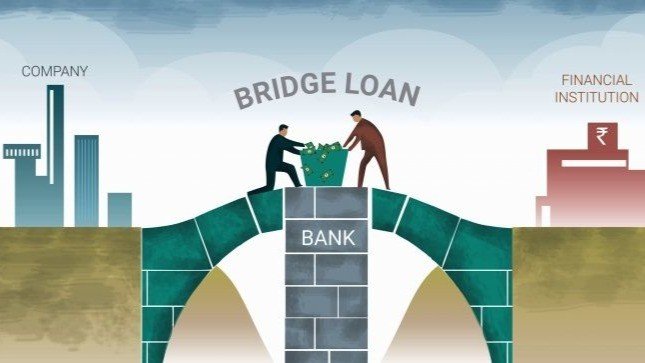In the fast-paced world of business, there are times when immediate capital is needed to seize an opportunity, close a deal, or manage cash flow gaps. Commercial bridge loans can provide businesses with the short-term financing needed to overcome these hurdles. In this article, we will explore what commercial bridge loans are, their key features, types, and the risks and benefits they carry. We’ll also look at real-life examples and scenarios, answer frequently asked questions (FAQs), and provide a comprehensive conclusion with key takeaways.
Key Takeaways
- Quick Financing: Bridge loans provide fast access to capital for businesses facing immediate needs.
- High Costs: While fast, they come with higher interest rates and additional fees.
- Secured by Assets: These loans are often secured by property or business assets.
- Short-Term Solution: Typically repaid within 6 to 12 months, with a focus on securing long-term financing.
- Risk of Default: Businesses must be able to repay the loan in full or face losing the collateral.
By understanding the potential risks and benefits of commercial bridge loans, businesses can make informed decisions and ensure they are prepared for both the opportunities and challenges these loans present.
What is a Commercial Bridge Loan?

A commercial bridge loan is a short-term financing solution used by businesses to cover temporary cash flow gaps, typically in real estate transactions, property acquisitions, or business operational needs. These loans are designed to “bridge” the gap between the immediate need for capital and the long-term financing that a company might secure, such as a traditional mortgage or business loan.
Bridge loans are typically used in situations where fast access to capital is necessary but there is not enough time to secure traditional forms of financing. They are called “bridge” loans because they provide the needed capital until a more permanent funding solution becomes available.
Key Features of Commercial Bridge Loans:
- Short-Term Financing: These loans are typically repaid within 6 to 12 months, though some loans may have terms as short as 3 months.
- High Interest Rates: Because bridge loans are high-risk, they tend to have higher interest rates than traditional loans or mortgages.
- Collateral-Backed: Commercial bridge loans are usually secured by the property or asset being purchased or owned by the business.
- Flexible Terms: These loans often have flexible repayment structures and can be tailored to the borrower’s needs.
- Quick Approval and Funding: One of the main benefits is the fast approval process, with funds often disbursed within a matter of days.
Key Features of Commercial Bridge Loans
Commercial bridge loans have several key features that make them a suitable option for short-term financing:
| Feature | Description |
|---|---|
| Loan Term | Short-term (typically 6 to 12 months) |
| Interest Rates | Higher than traditional loans, typically between 8% and 15% |
| Repayment Structure | Flexible; interest-only payments or lump sum repayments |
| Collateral | Often secured by real estate or business assets |
| Loan-to-Value Ratio (LTV) | Typically ranges from 50% to 80%, depending on the type of asset |
| Approval Time | Fast approval and funding process (sometimes within 48 hours) |
Examples of Bridge Loan Features
- Collateral Requirements: If a business needs to purchase commercial real estate but doesn’t have the full amount of cash upfront, they can secure a bridge loan using the new property as collateral.
- Loan-to-Value Ratios: Typically, lenders will approve a loan amount that is between 50% to 80% of the value of the collateral (real estate or business asset).
Types of Commercial Bridge Loans
Commercial bridge loans come in various forms, each catering to specific business needs. Understanding these types is crucial for businesses looking to use a bridge loan effectively.
1. Real Estate Bridge Loans
These are the most common type of bridge loan. They are used by businesses to quickly acquire commercial property or other real estate. Real estate bridge loans can be used when a business needs to close on a property before they can sell an existing one or secure permanent financing.
Example:
A business wants to purchase a new office building but is waiting for the sale of an old office building to go through. The company uses a real estate bridge loan to finance the purchase of the new property while they await the sale of the old property.
2. Business Acquisition Bridge Loans

These loans are used by businesses that are looking to acquire another business. The bridge loan provides immediate funds for the purchase, and the business typically repays the loan once they secure permanent financing for the acquisition.
Example:
A company looking to expand its operations wants to acquire a competitor but doesn’t have enough capital immediately available. They use a business acquisition bridge loan to finance the deal and pay it off once they arrange for long-term financing.
3. Working Capital Bridge Loans
These loans provide businesses with immediate working capital to cover operational expenses, such as payroll, inventory, or other immediate needs, until longer-term financing becomes available or revenue starts flowing in.
Example:
A retail business facing a cash flow gap due to seasonal fluctuations uses a working capital bridge loan to cover operational costs until sales increase during the holiday season.
How Commercial Bridge Loans Work

Commercial bridge loans work by providing businesses with a quick, short-term financing solution to cover immediate needs. Here’s a step-by-step breakdown of how they typically work:
- Identify Need: A business identifies an immediate need for capital, such as purchasing a new property or covering short-term cash flow gaps.
- Apply for Loan: The business applies for a bridge loan, providing details about the asset or property being used as collateral, and their repayment strategy.
- Approval and Funding: The lender reviews the application and approves the loan, often disbursing funds within days to ensure quick access to capital.
- Repayment: The business repays the loan either in full at the end of the term or through interest-only payments, depending on the loan’s terms. Repayment is made once the business secures permanent financing or the short-term need is resolved.
Pros and Cons of Commercial Bridge Loans
Pros:
- Quick Access to Capital: One of the primary benefits is the speed of approval and funding, which is ideal when time is of the essence.
- Flexible Terms: Bridge loans are typically more flexible than traditional loans, allowing businesses to structure repayment terms that suit their needs.
- Secured Financing: Since these loans are backed by assets, businesses with valuable collateral may find it easier to obtain financing.
- Opportunity to Close Deals: A bridge loan allows businesses to take advantage of time-sensitive opportunities without delay.
Cons:
- High-Interest Rates: Bridge loans come with higher interest rates compared to long-term loans due to their short-term and high-risk nature.
- Short-Term Repayment: The short-term repayment period (usually 6-12 months) can place pressure on businesses if they are unable to secure permanent financing quickly.
- Risk of Default: If the business fails to secure longer-term financing or repay the loan, it risks losing the property or assets used as collateral.
- Additional Fees: Lenders may charge fees for origination, early repayment, and other administrative costs, which can increase the total cost of the loan.
Example Scenarios of Commercial Bridge Loans
| Scenario | Loan Amount | Interest Rate | Term Length | Collateral Used | Outcome |
|---|---|---|---|---|---|
| Real Estate Purchase | $1,000,000 | 10% | 6 months | Office Building | Property sold and loan repaid |
| Business Expansion | $500,000 | 12% | 12 months | Business Assets | Secured long-term financing for growth |
| Working Capital | $200,000 | 9% | 3 months | Inventory | Business repaid loan after successful sales cycle |
Also Read : How Bridge Loan Interest Rates Affect Your Financing Options?
Conclusion
Commercial bridge loans offer businesses a flexible, quick solution for securing short-term financing to close deals, cover cash flow gaps, or acquire property. While they provide fast access to capital, they come with higher interest rates and risks that businesses need to carefully consider. Understanding the features, types, and repayment structures of bridge loans is essential for businesses to navigate the risks and ensure that the loan works for their short-term financing needs.
(FAQs)
What is a commercial bridge loan?
A commercial bridge loan is a short-term loan used by businesses to cover temporary financing gaps until longer-term financing is secured.
How long do commercial bridge loans last?
Typically, commercial bridge loans last between 6 to 12 months, but they can vary based on the lender and the borrower’s needs.
What types of businesses use commercial bridge loans?
Commercial bridge loans are commonly used by businesses in real estate, retail, and those looking to acquire other businesses or manage temporary cash flow gaps.
Can I refinance a commercial bridge loan?
Yes, many businesses refinance their bridge loans with long-term financing once they have secured more permanent funding.
What happens if I can’t repay the bridge loan?
If a business cannot repay a commercial bridge loan, the lender may seize the collateral used to secure the loan, such as property or assets.
What are the eligibility requirements for a commercial bridge loan?
Eligibility typically depends on the value of the collateral, the borrower’s creditworthiness, and the nature of the business’s short-term financing needs.
Are commercial bridge loans expensive?
Yes, bridge loans often have higher interest rates and fees than traditional loans, making them more expensive.





